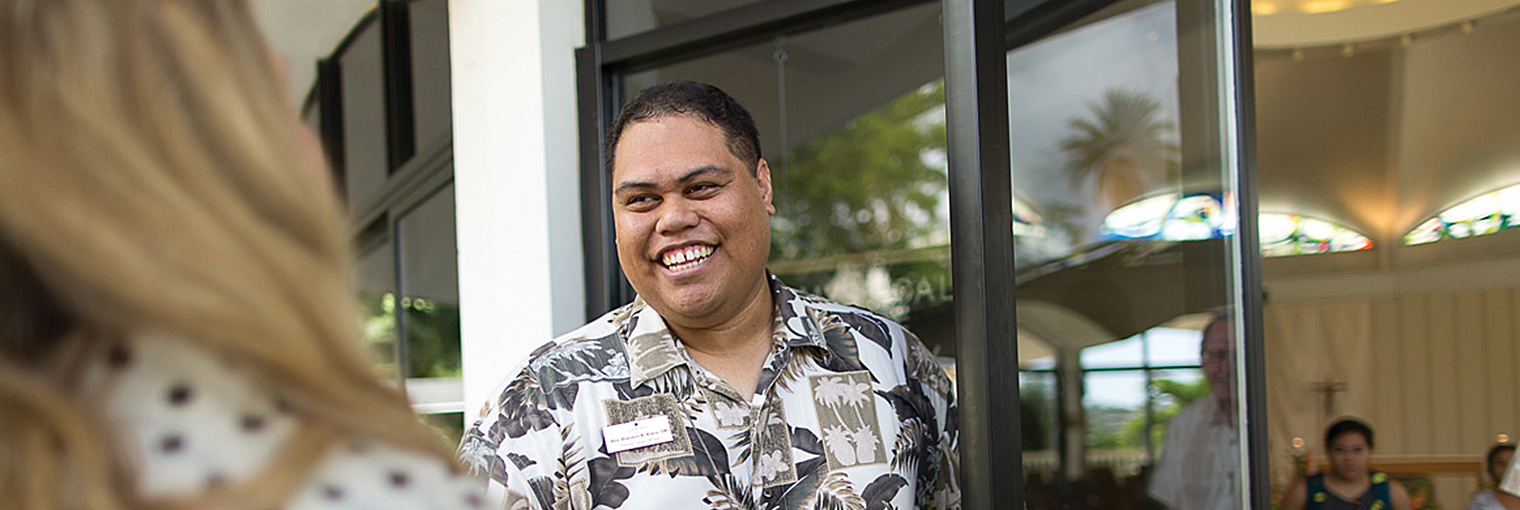
What is a religious congregation?
For Catholics, a religious congregation is a group of men or women who take public vows of poverty, chastity and obedience and who live under a common “rule of life.”
Who are the Marianists?
The Marianists are a worldwide family of Catholic brothers, priests, sisters and committed lay people. The Society of Mary is the male religious order of brothers and priests.
What makes the Marianists different from other orders?
The Marianists are distinguished by their unique charism—the particular gifts given by God for the benefit of the Christian community.
As men dedicated to Mary as a model of faith, Marianists seek to witness to the Gospel by living in and building communities of faith.
A unique feature of the Marianist charism is its structure as a discipleship of equals: brothers and priests share equal status; priesthood is seen as a ministry, not a “step up the ladder.”
In a broader way, Marianists see themselves as part of the Marianist Family, which includes Marianist Sisters and lay men and women who share in the same charism and work collaboratively. Like Mary, Marianist brothers and priests strive to bring Christ to the world and work for the coming of his kingdom.
What is a brother?
A brother is a man who has professed vows in a religious congregation. A brother is committed to living the religious life in response to God and may be engaged in a variety of ministries that express the charism of his religious congregation; he models in his commitment the person of Jesus through service to others.
What is the difference between a Marianist brother and a Marianist priest?
All Marianist priests are brothers. They became brothers first and remain Marianist brothers, sharing the same vows in common.
Marianist priests, with the affirmation of their province members, have completed seminary studies and become ordained ministers. They’ve undergone priestly formation in a Marianist context at our Marianist seminary in Rome. Marianist priests, like all priests in the Catholic Church, are ministers of the sacraments and bring these distinct gifts to their brothers, to the Marianist Family, and to the Church.
Can Marianist brothers get married?
No. Marianist brothers take vows of poverty, celibate chastity, obedience, and, at final profession, stability. The vow of celibate chastity means foregoing the married life or any exclusive relationship of love with another person. Brothers, by nature of this vow, are called to a kind of loving that is impartial, inclusive, and freeing for the other—in a radical way, they are called to love like Jesus in his earthly ministry.
What is a vow?
A vow is a public religious commitment made before God. For example, men and women make public vows to one another before God in the sacrament of marriage. Vowed religious likewise make public vows to serve God as faithful members of their congregation.
What is the difference between a diocesan priest and a priest from a religious congregation?
A diocesan priest serves in a particular diocese and makes a promise of obedience to the diocesan bishop. He lives a celibate life but does not take a vow of poverty. Priests and brothers in religious congregations profess vows of poverty, chastity and obedience. Marianists also profess the vow of stability, which reflects their lifelong dedication to Mary. Religious priests serve the particular needs of their religious congregation; their service of the wider Church is channeled through obedience to their religious superiors.
Pope Francis, a member of the Jesuits, is an example of a religious order priest. As pope, he is also the leader of all the bishops of the Church.
What is a province?
A province is a geographic grouping of communities of a religious congregation. The superior of the group is called a provincial or provincial superior.
Do Marianists wear a habit?
Not that you’d notice immediately. The sole common habit of the Marianist brother is the gold ring he wears from the time of perpetual profession. As far as clothing goes, our Rule of Life calls for no other visible sign of our membership.
When the Society of Mary was founded in 1817, Blessed William Joseph Chaminade required Marianist brothers and priests to wear the appropriate professional dress of their day, being neither noticeably out of fashion nor at the height of fashion.
How long is the formation process for becoming a Marianist brother?
The length of time for being a contact varies. The aspirancy lasts 10 months. The novitiate program lasts two years. Temporary profession lasts from three to six years. So, from aspirancy to final profession, the initial formation process takes between six and nine years.
Brothers called to the priesthood have additional formation in seminary, which usually takes three more years. Read more about our formation steps.
